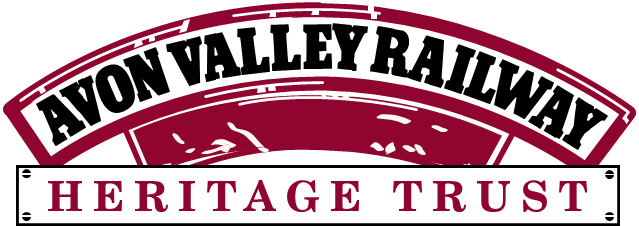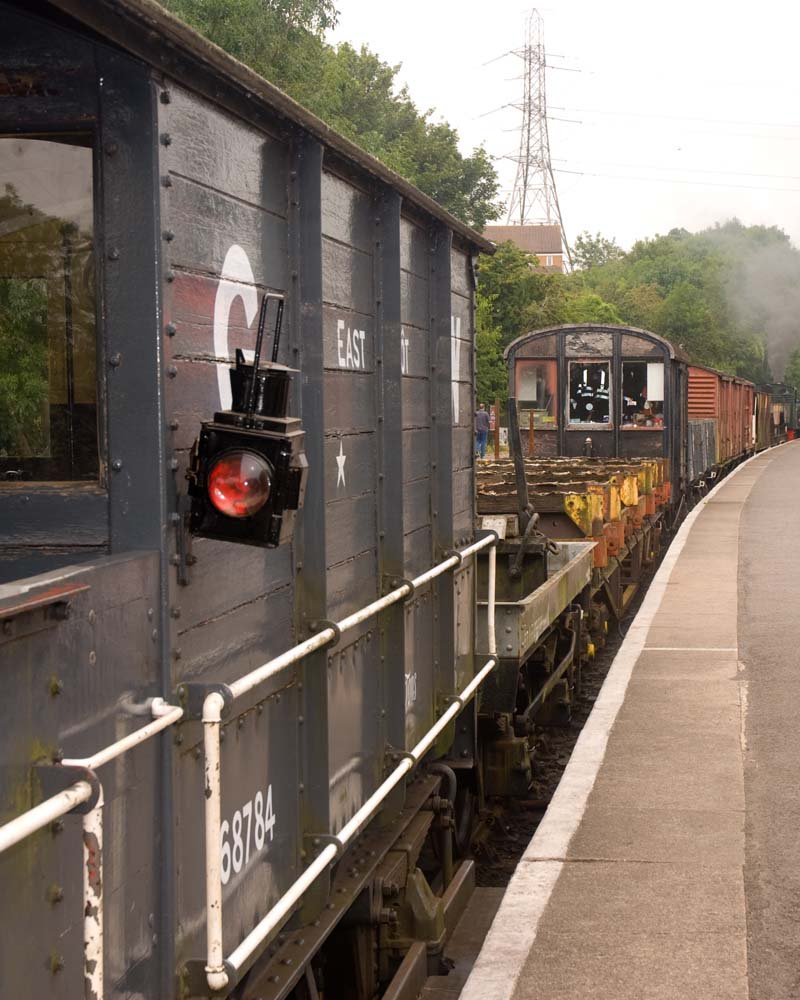
About The Avon Valley Railway
A brief history of the line…
Opened in 1869 by the Midland Railway as a through-route between Birmingham and the South Coast the line was later linked to the iconic Somerset & Dorset Railway. Closed under the Beeching Axe of the 1960's the Avon Valley Railway was preserved by an enthusiastic group of volunteers. Today, 50 years on, three miles of track has been re-laid, locomotives and carriages restored, and the sound of steam can once again be heard along the Avon Valley.
Our History
The railway is part of the otherwise-dismantled Midland Railway Mangotsfield and Bath Branch Line, which was closed during the late 1960s as a result of the Beeching cuts and due mainly to the Great Western Railway being just a few miles to the south, which also connected Bristol and Bath.
The railway is perhaps best known for connecting the former Somerset and Dorset Joint Railway (S&DJR), whose northern terminus was at Bath Green Park station, with the London, Midland and Scottish Railway (LMS). The Midland Railway lines along the Avon Valley thus opened up the S&D lines to travellers from the British industrial Midlands. This was particularly so during summer Saturdays when families flocked south to the beaches of Dorset and the English south coast. Many extra trains thus had to be added to the schedule to accommodate this increased demand. Although owned and run by the Midland Railway, many S&D locomotives were often seen working trains along this line.
AVR - PAST & PRESENT
On 6th March 1966, driver Archie Gunning, fireman Albert Parsons and guard Bernard Ware were working the last train over the Somerset and Dorset Railway prior to cessation of passenger services over that line and the Mangotsfield to Bath Branch. Twenty-five years later to the day, 6th March 1991, those same gentlemen were guests of honour at a much happier occasion – the opening of the Avon Valley Railway’s new line extension from Bitton Station to Oldland Common.
The story of the rebirth of this part of the former branch line goes back to 1972 when a group of local people set up “The Bristol Suburban Railway Society”, based at Bitton Station, with the grand aim of re-opening the line for a commuter service. Although the station building had, by now, been reduced to a shell, the society was granted permission to use Bitton as it’s base and work began to restore the building and re-lay track. In 1974 the first train rides were possible and, although there were only 100 yards of track, the public response was tremendous, encouraging the society to continue with its plans for the future.
In 1979 the Bristol Suburban Railway Society was incorporated into the Bitton Railway Company Ltd., with a new aim of preserving the line in order to operate trains for public benefit and to educate, stimulate and encourage interest in railway preservation. For the next few years, work continued in extending the line northwards towards the site of what had been Oldland Common Halt.
Although this was completed in 1988, the track remained unused for a number of years whilst a legal battle was fought by a small number of neighbours opposed to the opening of the Railway. The case was eventually won by the Railway, but at a cost of over £30,000 in legal and other fees – valuable money which had been intended for use on further expansion.
The increase in line length, although quite short in comparison with many preserved railways, encouraged many passengers to the Railway even though, at this stage, they were not able to alight at the other end. By the close of 1991, twice as many people had travelled on the line as in the previous year, with the high point coming from a record 5,700 passengers in one “Friends of Thomas the Tank Engine” day! This extra income went some way to paying off the debts incurred in obtaining the Light Railway Order. A new platform, complete with a run-round loop, was eventually built at Oldland Common and opened in 1999.
In the meantime, further expansion northwards had become impractical due to developments in local transport and housing. Consequently the Railway decided to concentrate on a southern extension and work began on raising money to purchase track for the push toward Bath and the River Avon.
Work on laying the track south began in 1992, giving volunteers and the public their first taste of the scenic Avon Valley. However with rail and sleepers costing some £75,000 per mile to buy and the cost of the Public Enquiry still blighted the Railways finances, progress was slow. By this time Local Authority boundary changes meant the Railway, including the line south to river, had come into the new county of South Gloucestershire. Over several months a good relationship was forged with the Council, acknowledging the potential which the Railway provided for the leisure access to the river valley. first bridge over the River Avon south of Bitton. As with the original railway pioneers, the considerable hurdles placed in the way of the volunteers were dealt with one by one and, as the 21st Century approached, the line was extended to within a stone’s throw of the first of three major crossings of the River Avon.
The River Avon Project was a large-scale project undertaken from 2000 to 2004, and which cost the Avon Valley Railway £150,000, was the extension of the line southwards for around 400 metres. Although only covering a short distance, the extension required track to be laid across the river bridge (involving a highly expensive safety examination of the structure), plus the construction of a brand new platform with a run-round loop.
The construction of the new platform “Avon Riverside” marked a watershed moment in the life of the line. Trains no longer require ‘top-and-tail’ engines on the southbound journey and spectators can watch steam engines running round and coupling up at both ends of the line. Amongst other advantages, it enables passengers and users of the Bristol and Bath Railway Path – including the disabled – to reach the riverside and picnic area by train. British Waterways have added to the facilities by building a 50-metre landing stage at the riverbank, allowing craft using the river to tie up alongside. This has led to a new initiative: riverboat trips on specific days throughout the season, as an added attraction to the train service. Within walking distance of the platform are a host of excellent pubs and the large and popular Avon Valley Country Park is close by.
A new charity, the Avon Valley Railway Heritage Trust was established to preserve the railway heritage of the area and to operate trains for educational and instructional purposes. Meanwhile at Bitton, work continues on the buildings and site. The first decorative barge boards, a distinctive feature of the original station buildings, have been fitted to the front eaves. Boards such as these originally decorated all five eaves and it is planned that these will all eventually be replaced. In the station yard the original 1860s Goods Shed, currently the Railway’s workshop, has been totally re-roofed and, at the moment, is the only covered accommodation where restoration work can be carried out.
As with any heritage railway, there is always ongoing restoration work taking place on locomotives, carriages and wagons – all carried out by volunteers.
The Avon Valley Railway, now a major tourist attraction receiving up to 80,000 visitors a year, is already showing the potential to become the catalyst that brings together a whole range of attractions in the area. As the Railway develops, visitors will be able to use the trains to explore more of the Avon valley and the delights which, for many people, have been hidden from view.



